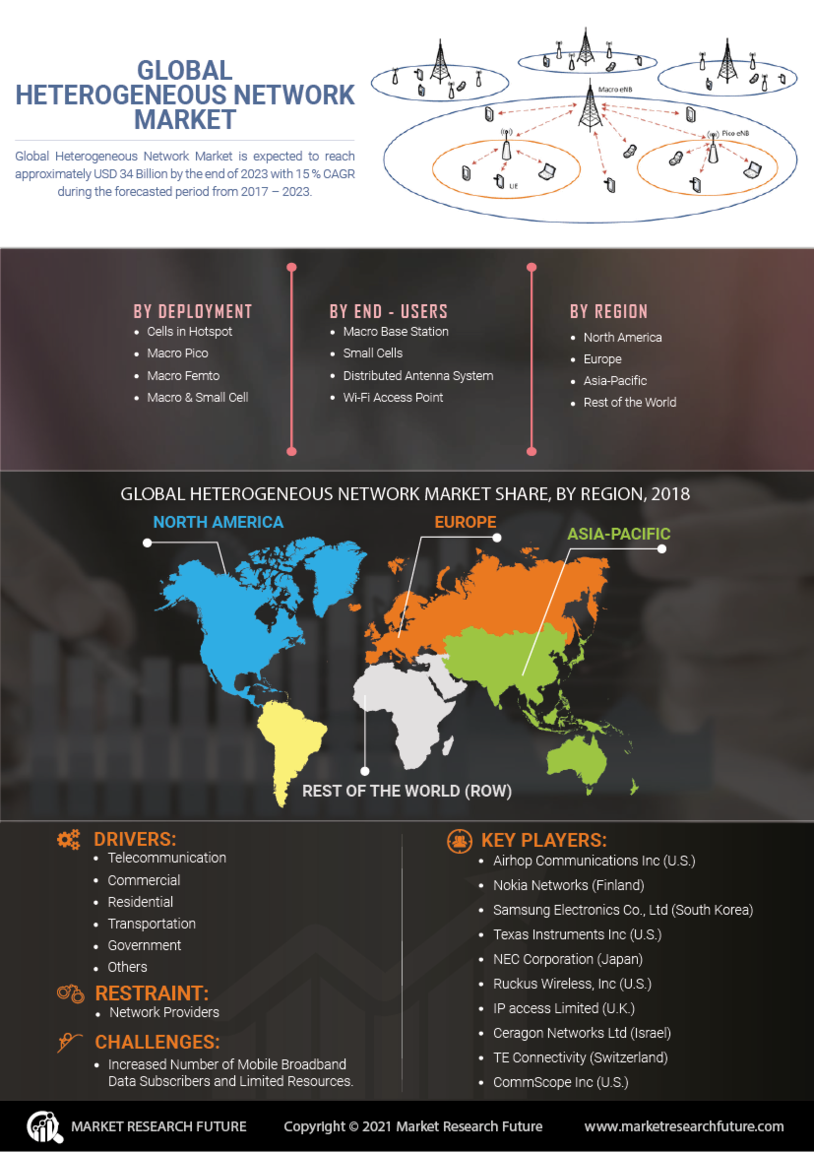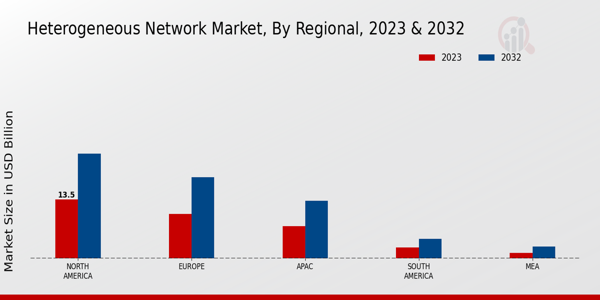Market Growth Projections
The Global Heterogeneous Network Market Industry is projected to experience substantial growth, with estimates indicating a rise from 36.3 USD Billion in 2024 to 77.0 USD Billion by 2035. This growth trajectory suggests a robust demand for heterogeneous network solutions, driven by factors such as the increasing complexity of network environments and the need for enhanced connectivity. The anticipated compound annual growth rate (CAGR) of 7.07% from 2025 to 2035 further underscores the market's potential, reflecting the ongoing evolution of networking technologies and the expanding role of heterogeneous networks in various sectors.
Integration of IoT Devices
The integration of Internet of Things (IoT) devices significantly propels the Global Heterogeneous Network Market Industry forward. As more devices become interconnected, the demand for networks that can efficiently manage and transmit data from various sources intensifies. This trend is expected to contribute to the market's expansion, with projections indicating a growth to 77.0 USD Billion by 2035. The heterogeneous network architecture facilitates the seamless integration of IoT devices, ensuring reliable communication and data exchange, which is crucial for applications in smart cities, industrial automation, and healthcare.
Growing Cybersecurity Concerns
The rising incidence of cyber threats has heightened the focus on cybersecurity within the Global Heterogeneous Network Market Industry. Organizations are increasingly aware of the vulnerabilities associated with diverse network environments, prompting investments in robust security measures. This trend is likely to drive the demand for heterogeneous networks that can incorporate advanced security protocols and technologies. As businesses prioritize safeguarding sensitive data and maintaining compliance with regulatory standards, the market is expected to witness sustained growth, reflecting the critical need for secure and resilient network infrastructures.
Regulatory Compliance and Standards
Regulatory compliance and the establishment of industry standards significantly influence the Global Heterogeneous Network Market Industry. Governments and regulatory bodies are increasingly implementing frameworks that mandate specific performance and security standards for network operations. This regulatory landscape compels organizations to adopt heterogeneous network solutions that align with compliance requirements. As a result, the market is poised for growth as businesses invest in technologies that not only meet regulatory standards but also enhance operational efficiency and service delivery.
Advancements in Network Technologies
Technological advancements play a pivotal role in shaping the Global Heterogeneous Network Market Industry. Innovations such as software-defined networking (SDN) and network function virtualization (NFV) enable more flexible and efficient network management. These technologies allow for the dynamic allocation of resources, optimizing network performance and reducing operational costs. As organizations seek to enhance their network capabilities, the adoption of these advanced technologies is likely to increase, contributing to a compound annual growth rate (CAGR) of 7.07% from 2025 to 2035, reflecting the industry's commitment to modernization and efficiency.
Rising Demand for High-Speed Connectivity
The Global Heterogeneous Network Market Industry experiences a surge in demand for high-speed connectivity, driven by the proliferation of data-intensive applications such as streaming services, online gaming, and cloud computing. As organizations and consumers increasingly rely on seamless internet access, the market is projected to reach 36.3 USD Billion in 2024. This growth is indicative of the necessity for robust network infrastructures that can support diverse technologies, including 5G, Wi-Fi 6, and fiber optics, which are essential for delivering enhanced user experiences and accommodating the growing volume of data traffic.





















Leave a Comment